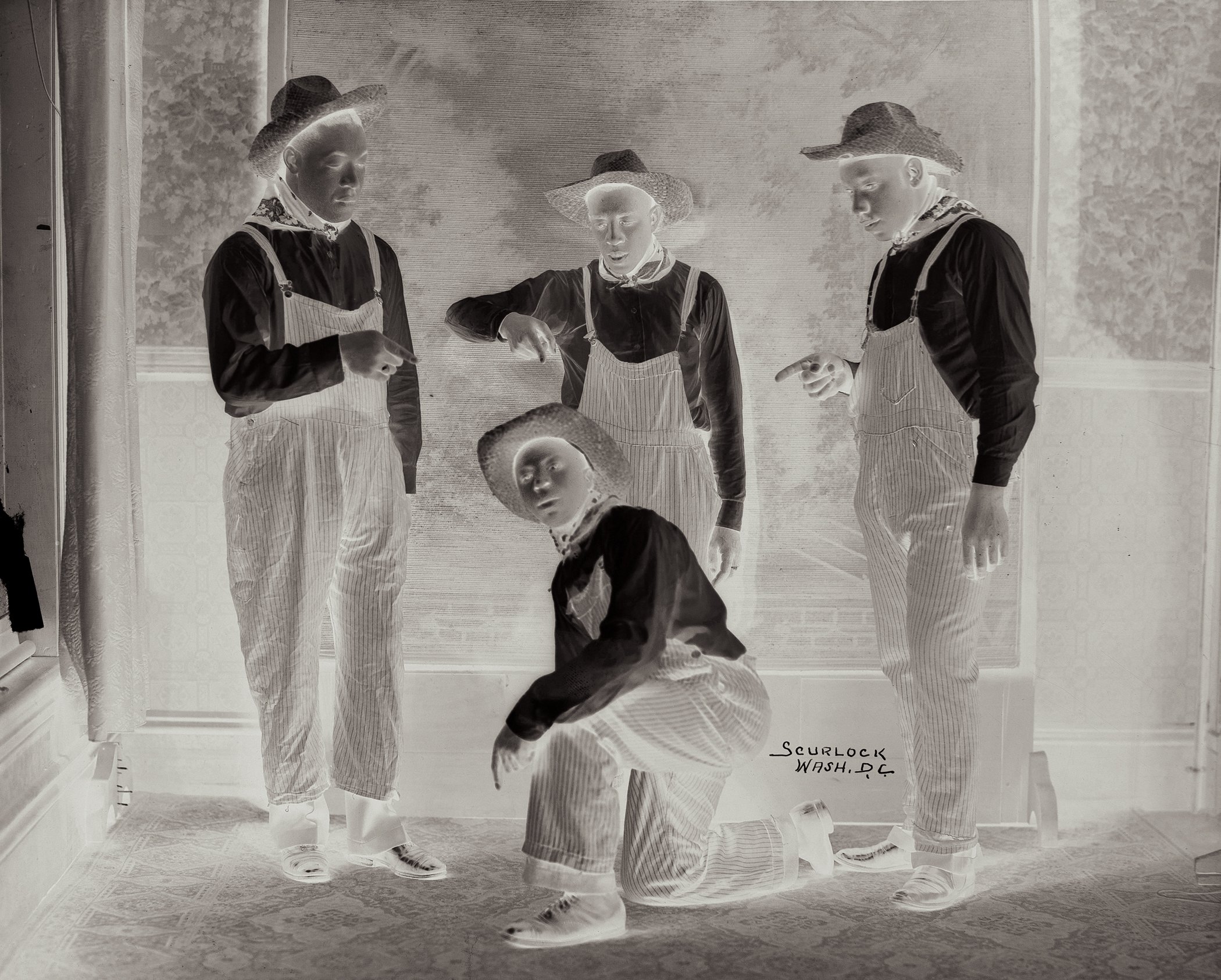Addison Scurlock
(1883-1964)
Black Art Auction is pleased to offer an extraordinary collection of rare glass plate negatives, as well as traditional plastic negatives made by Addison Scurlock (1883-1964) and, later, his sons. The lot includes more than 150 glass plate negatives made by Addison between 1907 and 1912.
Subjects include notable African Americans who lived in the Washington, D.C. area, pre-Negro League African American baseball players representing government agencies such as the Interior Department, Post Office Team, etc., and scenes of Howard University. One glass plate negative is labeled “my first or second photo” in the artist’s hand. Scenes include shots of the Capitol Building, the Washington Monument, horse-drawn carriages on The Speedway at Potomac Park, and the 1907 Jamestown Exposition, where Scurlock won a gold medal for photography.
Many of these glass plate negatives maintain their original sleeves, which denote the subjects. Plastic negatives depict Howard University’s football, basketball, and swim teams.
“In some ways I think the Scurlocks saw themselves as partners with Du Bois in...crafting a new vision of America, a vision where racial equality and racial improvement was possible.”
To illustrate the rarity and significance of this collection, the National Museum of American History (Smithsonian Institution), Washington, D.C., has fewer than 100 glass plate negatives in its collection. This collection will be offered as one single lot. Detailed information concerning the items in this lot will be provided in the upcoming catalog (posting on February 2), but please call or email us with inquiries. (314)727-6249 or info@blackartauction.com.
Addison Norton Scurlock was born in Fayetteville, North Carolina, in 1883. His father, George, was a businessman and politician. The family moved to Washington, DC in 1900 after Addison finished high school. He began an apprenticeship with photographer Moses P. Rice the following year. In 1904, Scurlock set up a photographic studio at his parents' house but opened his own in 1911 at 900 U Street NW. This area, known as the U Street Corridor, was the hub of Black cultural life from the 1920s-60s and was referred to as Black Broadway by some. Addison’s sons, George H. And Robert S., joined the business in the 1930s after graduating from Howard University. The sons bought the business from their father the year before he died in 1963.
The Scurlock Studio and Black Washington: Picturing the Promise, was presented in 2010 by the Smithsonian’s National Museum of African American History and Culture, featuring the work of the Scurlock family.
Photos: Gardullo, Paul. The Scurlock Studio and Black Washington: Picturing the Promise. National Museum of African American History and Culture, 2008.






